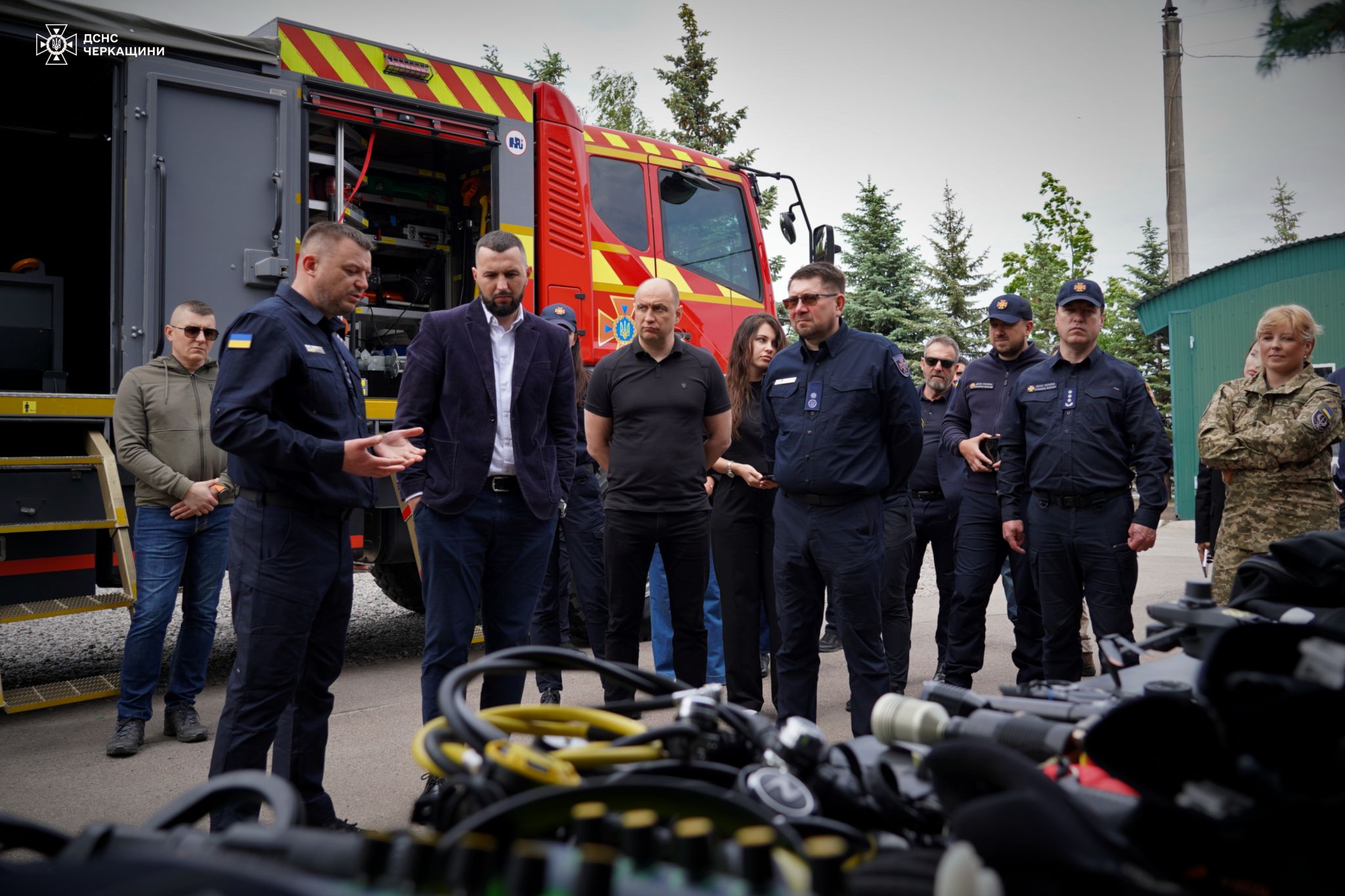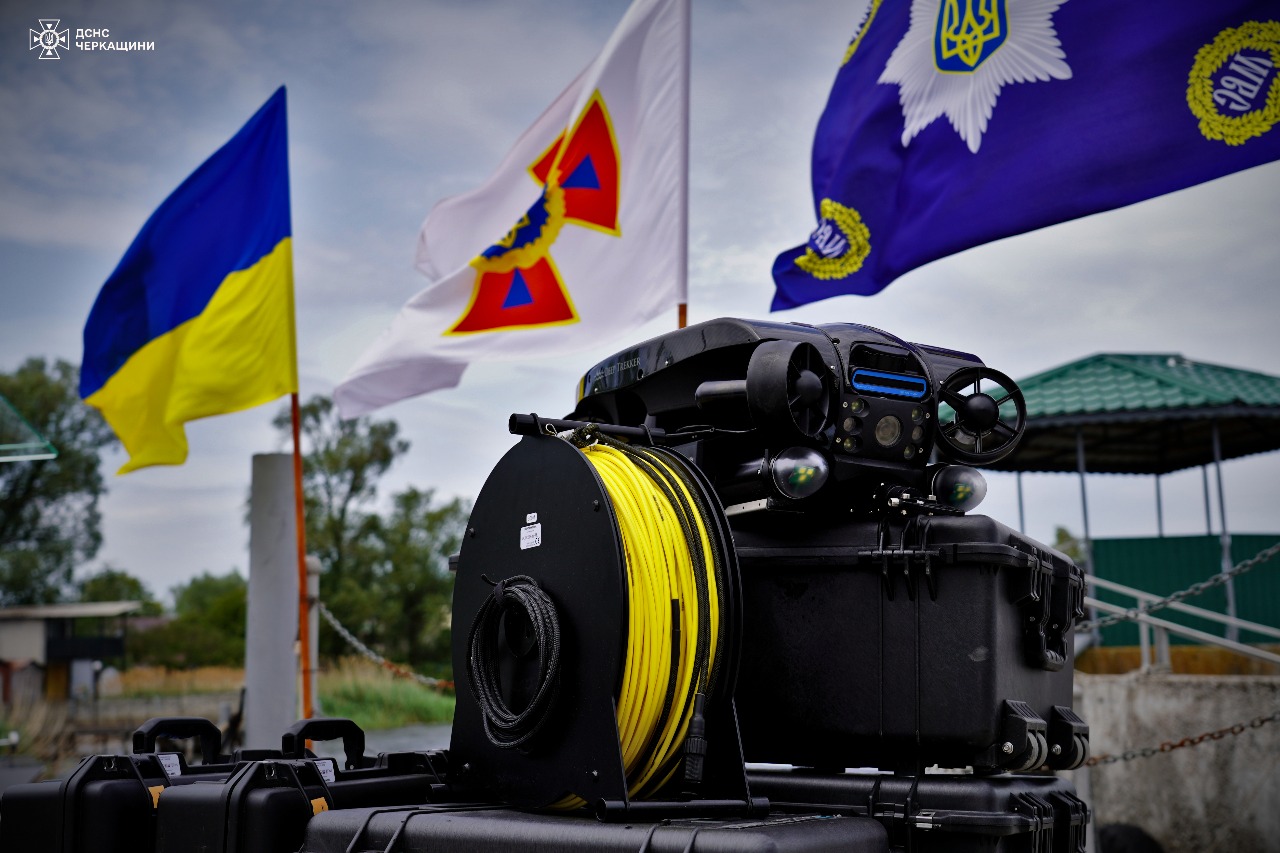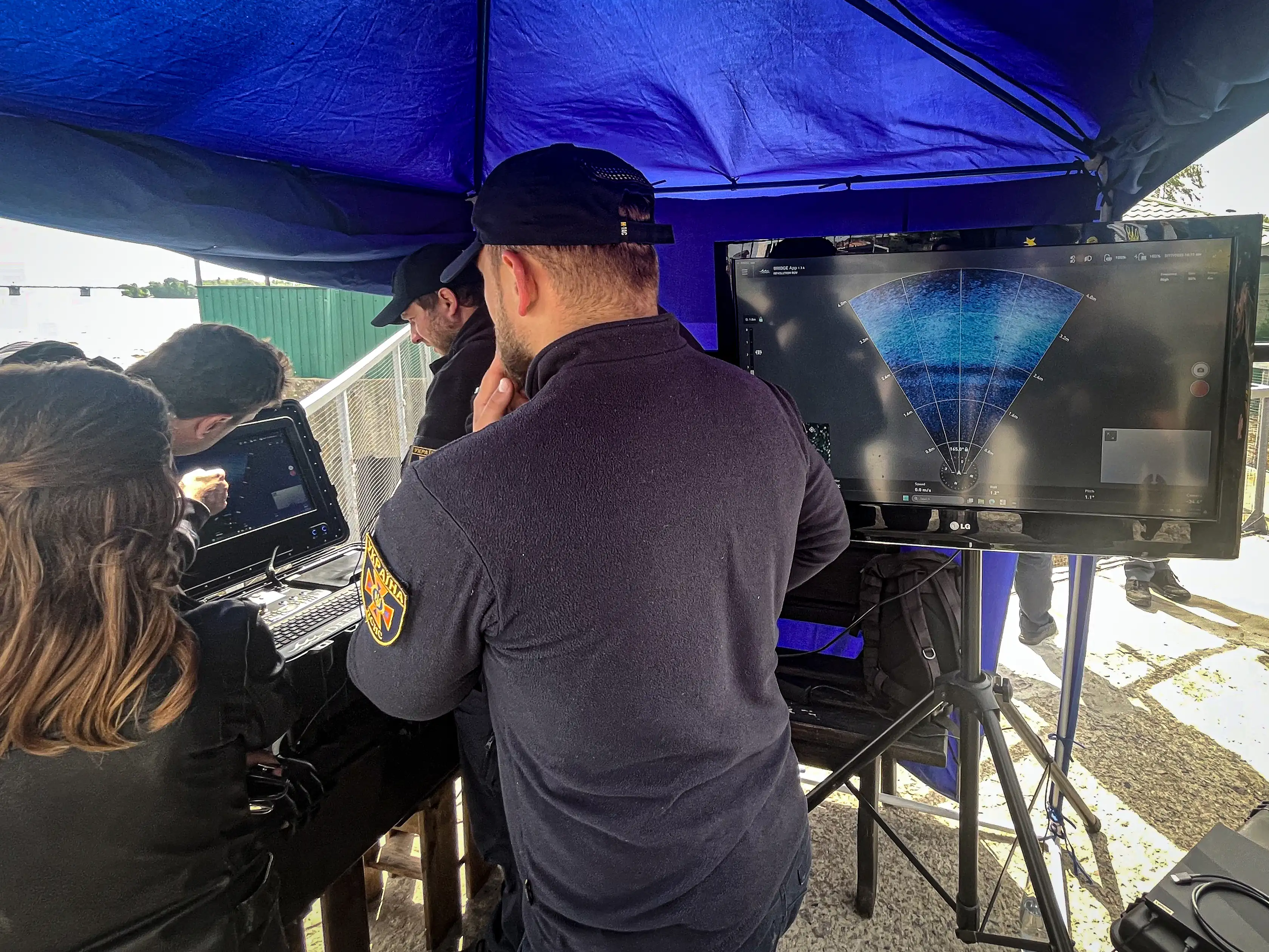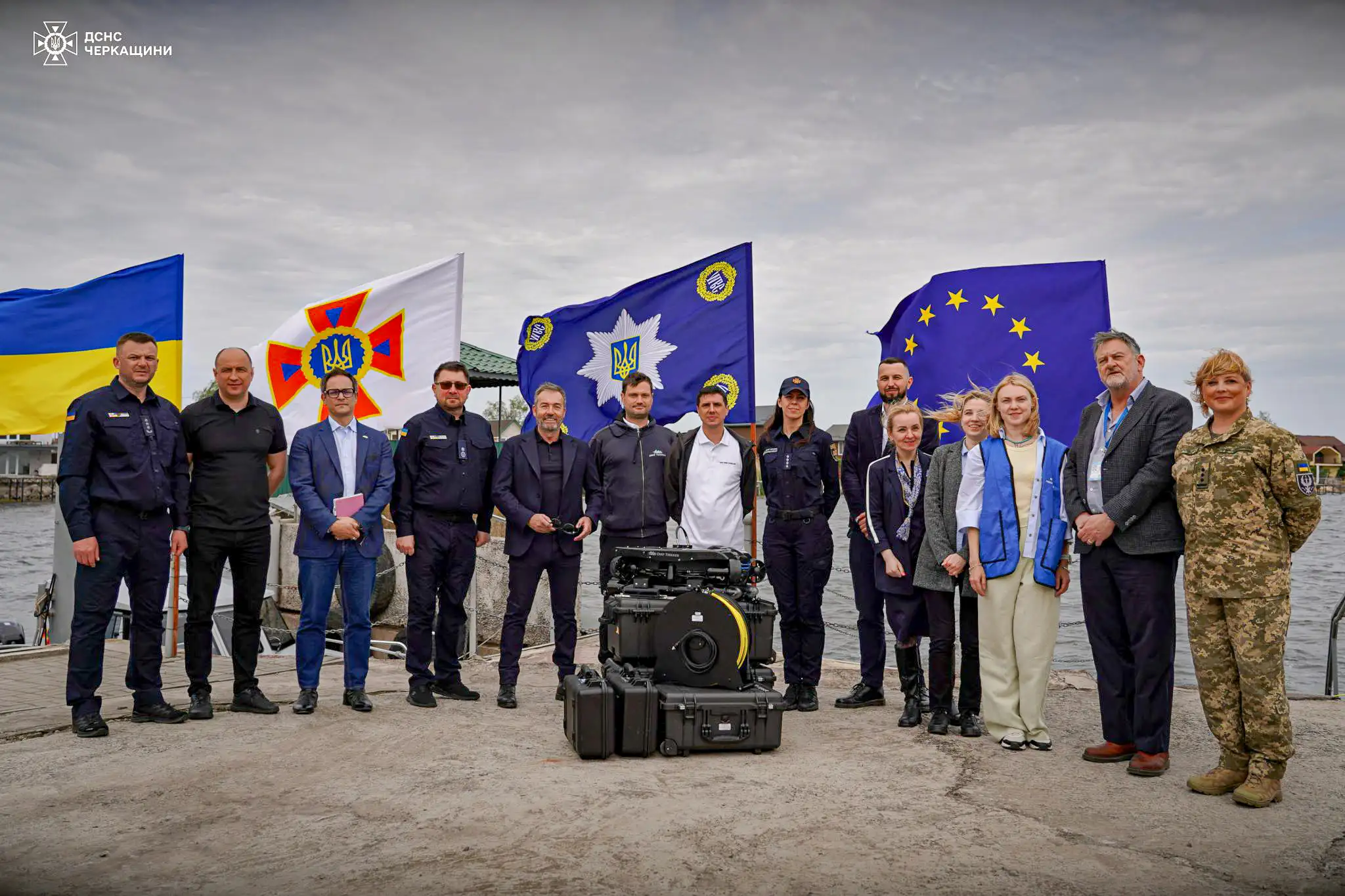Configure Now
Items in Your Cart0
0Items in Your Cart
Start building your packageShop Now
Sixteen Deep Trekker REVOLUTION ROVs have been delivered to the State Emergency Service of Ukraine (SESU) under a United Nations Development Programme (UNDP) initiative, funded by the governments of the Republic of Korea, France, and New Zealand.
The systems will be utilized by trained SESU teams conducting operations in water bodies contaminated with explosive remnants of war across Ukraine, supporting critical underwater explosive ordnance disposal (EOD) operations.
“The opportunity to supply the Emergency Services in Ukraine, through the United Nations Development Programme, with an aquatic mine detection system based on our REVOLUTION ROV is hugely important for Deep Trekker,” said Alan Middup, President of Deep Trekker.

“Not only does it prove the capability of our ROVs in such a challenging environment, it also underlines our global reach and ability. I am very proud of the fact we were able to deploy a team of our own technical and mission experts to Ukraine alongside our ROVs and successfully train the emergency services in their use. The work these teams can now complete within waterways in Ukraine is crucial to the ongoing effort of making safe areas of Ukraine.”
The ROV deployment is part of a larger UNDP-led mine action program in Ukraine. In addition to supplying underwater drones, the project includes technical training, inter-agency SOP development, and strategy alignment to ensure safe, standardized operations across regions.
According to SES estimates, roughly 13,500 square kilometers of inland water must be assessed for explosive hazards - an area comparable to the size of Montenegro, Jamaica, or roughly twice the size of Prince Edward Island. The integration of remotely operated vehicles makes this large-scale task more feasible and far safer.

Several international partners emphasized their support for this approach. Korea, France, and New Zealand all highlighted the need for new technologies in high-risk environments:
“We understand that significant risks are hidden underwater – and new approaches are needed to overcome them. We are proud to be able to help provide SES divers with technologies that will allow them to work safely and effectively,” said a representative from the Embassy of the Republic of Korea in Ukraine.
“France has long supported the development of Ukraine's national capacity in the field of demining, and we are proud to have joined this initiative. Today's transfer is a concrete demonstration of our commitment to the security of the Ukrainian people,” added Frederic Rousseau, Humanitarian Attaché, French Embassy in Ukraine.
“"By supporting underwater mine clearance in partnership with UNDP, the Government and people of New Zealand are committed to helping communities rebuild with greater confidence and security,” said Paul Ballantyne, Chargé d’Affaires ai, New Zealand.
Since the beginning of the full-scale invasion, SES has tripled the number of certified diver-sappers. But to keep pace with the growing demand for underwater clearance, reliable robotic systems are essential. As Oleksiy Migrin, Deputy Head of the SES, noted:
“Providing modern equipment and organizing training is critically important for the safety and effective work of our specialists.”

Maria Gutsman, Head of UNDP Ukraine’s Recovery and Peacebuilding Programme, described the broader goal:
“Traditional methods are no longer sufficient - innovations are becoming a necessity to save human lives.”
This includes ROVs, AI-based detection tools, aerial and satellite data, and other technologies helping Ukraine systematically reclaim contaminated areas. In 2024 alone, UNDP’s mine action programs helped return nearly 4 million square meters of land to safe use.
Designed for durability and performance, the Deep Trekker systems delivered to SES are capable of submerging to 300 meters. They integrate imaging sonars and visual cameras, with advanced navigation tools for working in low-visibility and GPS-denied areas. These features allow divers and EOD teams to inspect, identify, and mark potential threats with greater efficiency and less personal risk.

Each REVOLUTION ROV deployed is built from Deep Trekker’s RECON configuration, equipped with a suite of integrated tools:
This configuration is built to identify, track, and map targets in low-visibility environments, with confirmed positional accuracy within a few meters even after extended missions. The dual-sonar system allows for both real-time visual acquisition and wide-area scanning, while the inertial navigation unit ensures continuity of operations in GNSS-denied zones.
The REVOLUTION ROV is engineered for field deployment with minimal logistical burden. With battery operation, rugged materials, and a streamlined service architecture, it’s designed to withstand demanding missions while remaining simple to maintain. These features are essential for ongoing EOD efforts in Ukraine’s inland water bodies, where time, access, and safety are constant constraints.

A major capability upgrade is the use of Deep Trekker’s BRIDGE Console - a purpose-built, rugged control system that enables operators to manage sonar data, video feeds, mission logs, and mapping overlays in real time. With the BRIDGE app, all mission data is easily exportable for inter-agency coordination and post-mission review.
The BRIDGE Console supports advanced navigation functions powered by the integrated DVL and SensorPod +, providing consistent tracking and mapping even in GPS-denied environments. During operational testing, the system demonstrated reliable positional accuracy with drift limited to a few meters after 30 minutes of submerged use. Operators are able to generate and overlay mission maps, re-acquire known targets with high precision, and manage ongoing search patterns effectively within a single integrated interface.

“All data is fused and available thanks to the Bridge Console and the Bridge app,” noted Riccardo Caponi, Account Executive at Deep Trekker. “Incredible flexibility in how data is displayed, transferred, and managed in the field.”
Over a two-week period, Deep Trekker technical staff and UNDP experts worked on-site with SESU divers to provide operational training on the REVOLUTION ROV systems. The sessions combined classroom instruction with real-world deployment scenarios, covering system setup, launch and recovery procedures, tether management, sonar operation, inertial navigation workflows, and mission data handling using the BRIDGE Console and app. Operators were trained on both primary sonar systems (Blueprint M1200d multibeam and Imagenex Micro Side Scan) as well as on procedures for reacquiring targets, conducting methodical search patterns, and managing data overlays for post-mission review.

“It was an incredible experience and a true privilege to collaborate with the UNDP in delivering ROVs to SESU,” said Tim De La Franier, Deep Trekker Diagnostician & Service Trainer. “These ROVs will play a vital role in enhancing their operational capabilities, equipping them with the advanced tools needed to carry out critical missions more safely and effectively. Their focus, commitment to mastering the new technology, and their eagerness to learn made the training process highly effective and efficient.”
Thirty-one SESU personnel successfully completed the program and are now equipped to operate the systems independently. The hands-on structure allowed participants to complete full mission cycles in varied conditions, reinforcing real-time decision-making using the ROV’s sensor suite and navigation data.
“Training the State Emergency Service of Ukraine for two weeks on our underwater robots for IED operations was an incredibly impactful experience,” added Caponi. “Their dedication and rapid grasp of the technology, especially given the critical nature of their work, was truly inspiring. We're proud to have equipped them with new capabilities for such vital missions.”
This deployment is part of a broader UNDP mine action initiative focused on building national capacity for safe, standardized underwater demining. The support of governments from the Republic of Korea, France, and New Zealand helped make the transfer possible.
Ihor Bezkaravayny, Deputy Minister of Economy of Ukraine, emphasized the strategic importance of this initiative: “This is another important step in ensuring that humanitarian demining efforts in Ukraine meet real needs on the ground. We are sincerely grateful to UNDP and the governments of the Republic of Korea, France and New Zealand for their partnership in implementing innovative approaches to demining.”

Deep Trekker remains committed to supporting frontline humanitarian operations with proven, mission-ready underwater systems - and to standing alongside the operators who put them to work.
For product and training information, visit the Deep Trekker website or get in touch with one of our specialists.
November 3rd, 2025
At REPMUS 2025, Deep Trekker’s ROVs validated real-world mine countermeasure capabilities...
July 5th, 2025
Deep Trekker’s new Tampa facility brings faster ROV repairs, in-stock parts,...
June 11th, 2025
Equipped with sonar and DVL, Deep Trekker ROVs are helping SES...